Are Banks Finally Walking the Talk On Renewables?


Many of the world’s leading banks have long been talking up their climate action credentials, including their financing of renewables. That obviously makes sense, as banks hold trillions in assets that are at risk if the effects of climate change can’t be mitigated in the coming years. The problem, however, is that while banks talk up their climate-friendly investments, critics of the sector point out that their efforts won’t amount to much if they keep financing massive fossil fuel projects.
Well, it turns out that banks may finally be putting their money where their mouths are — or, should we say, where their vaults are.
According to a recent Bloomberg report, banks are beginning to align their investments with the overarching goals of the Paris climate agreement. Here’s the deal: After plunking at least $3.6 trillion into fossil fuel investments since the Paris agreement was signed in late 2015 — a rate that outpaced investments in renewables and other clean technologies by a rate of nearly 3 to 1 — that stark trend has reversed itself, albeit mildly.
Bloomberg’s analysis of data from about 140 financial companies across the globe found that, so far this year, they have issued $203 billion in bonds and loans for clean power projects. That’s about 7 percent more than the amount they invested in fossil fuel projects. We’re not talking a huge turnaround, but banks may be turning a small corner.
Still, their investments in renewables are dwarfed by the fees that banks receive from underwriting financial packages for fossil fuel companies. “Banks have pocketed an estimated $16.6 billion from arranging bonds and loans for energy companies since the Paris announcement,” write Bloomberg’s Tim Quinson and Mathieu Benhamou, “more than double the $7.4 billion garnered from green bonds and loans.”
So, while a corner may have been turned, there is still quite a steep mountain to climb. Quinson and Benhamou pointed to a recent analysis from S&P Global that suggests if the world is to limit global warming to 2 degrees Celsius by 2050, banks have to lead the way. “Banks need to take climate change seriously,” said S&P’s Jennifer Laidlaw. “Their exposure to the wider economy through lending portfolios across industries means that they could be at a higher risk than other sectors.”
To avoid those risks, banks will need to cut a copious amount of checks. According to the Intergovernmental Panel on Climate Change (IPCC), the world will require about $3 trillion a year in climate-friendly investments to reach the goals of the Paris agreement. Yes, that’s trillion with a “T” and that figure is annual, not a total to reach by mid-century. And the amount needed to scale up renewables and energy-efficient technologies will have to surge by a factor of five if these climate goals will be met.
While it’s clear that government subsidies for fossil fuels must end — a tactic long deployed by even small countries like Belgium — it’s clear that the financial industry needs to drive change as well. In the words of Quinson and Benhamou, such change must be “lopsided” in favor of clean technologies over the harvesting of hydrocarbons, the latter of which has attracted a vast amount of government and banking largess over the past several decades.
Image credit: Zbynek Burival/Unsplash
Mobile Mindfulness: The Future of Mental Health


“I know, honestly, over the past year, I’ve had a couple situations where I felt like I just wanted out.”
Jill Benner will bravely tell you that she wasn’t always keen on using the ample time at home during the pandemic to brush up on her bread-baking skills or invest in a fun new hobby. The senior speech analyst with T-Mobile’s Customer Care says the panic, paranoia and unprecedented isolation caused by the pandemic tested her mental health in ways she could never have anticipated.
She, of course, is not alone.
A recent pulse survey from the U.S. Centers for Disease Control and Prevention (CDC) measured response changes from July 2019 to July 2020 and found:
- Rates of anxiety and depression were up 100 percent, year over year
- 41 percent of adults reported experiencing mental health distress
- 13 percent of those surveyed reported having started or increased alcohol or drug use during the time period to cope with stress or emotions related to COVID-19
- 10 percent seriously considered suicide in the previous 30 days due to pandemic-related stress
And yet, among adults reporting symptoms of anxiety and/or depressive disorder, more than 20 percent admitted needing but not receiving counseling or therapy in the past month during the pandemic. Benner says she was scared to be one of those people, until she began looking into what employee benefits were offered to her. What she found was something of a lifeline.
In recognition of Mental Health Awareness Month, we spoke with Benner to understand how she successfully made use of a digital well-being resource offered by T-Mobile to employees called LiveMagenta, as well as mental health experts who provide care through the program. By discussing what’s working and what isn’t with those who have lived through it on both the patient and professional side, a roadmap for greater success of care well beyond the COVID-19 pandemic is uncovered, as well as hope for what actually waits for us beyond.
“The ability to call someone or speak to someone right away was so key,” says Benner, “especially if you’re feeling overwhelmed or anxious. It’s important to your overall well-being and your health. Just having access to someone to talk to is so very important."
Feeling the effects
“Pandemic-induced anxiety,” Benner says bluntly, when asked what causes her trouble lately. “Being alone. If you don’t get to see your family for extended periods of time, it can be very difficult.”
Benner’s story is all too familiar. The specifics may change from person to person, but according to T-Mobile partners at UnitedHealthcare and Optum — who have collected data from various clients now examining the mental health effects of the pandemic on their employees — the tone remains consistent.
“Why do people need mental health resources?” asks Jessica Zach, an Optum Senior Client Executive partner with T-Mobile. “One of the leading diagnostic drivers in the mental health space today is anxiety and most of the recent feelings of anxiety that people are experiencing is attributed to the pandemic.”
Anxiety and trauma stress-related disorders being named the primary reason for seeking help has actually remained steady since the early months of pandemic lockdowns when nearly half of Americans reported the coronavirus crisis was affecting their mental health, according to a Kaiser Family Foundation poll.
A federal emergency hotline received an increase in calls by 1,000 percent between April 2019 and April 2020. Experts began digging into the data to learn about the surge, finding that many more people experiencing emotional distress were reaching out for help, and using their devices to do so.
Since 2017, T-Mobile has offered its well-being benefit LiveMagenta, which provides a wide-range of resources across a bevy of areas, from financial to physical and emotional. Whether you’re looking to stop smoking, save up to buy a home, prepare to adopt a child or focus on your mental health, LiveMagenta seeks to connect T-Mobile employees with experts and the tools to tackle some of life’s big challenges. The program was expanded to include legacy Sprint employees soon after the merger with T-Mobile in 2020, and the types of services provided, especially in the mental health space, evolved over time — from apps to virtual therapy programs.
“I think things are getting better, but there’s still fear,” Benner explains. “People are going through fear of what happens when things open up. Will this reoccur? There’s an unknown, and having access to tools [like these] is so important to be able to work through those kinds of questions. LiveMagenta gives you that access, which is just phenomenal.”
In November, T-Mobile also became the first wireless company to extend mental health resources to customers via the nationwide 988 emergency lifeline. Those in need of free mental health support were able to access it immediately by dialing 988 to be connected directly to the National Suicide Prevention Lifeline, a network of approximately 180 local and state-funded crisis centers. Further reinforcing that our devices are key to finding help even as we prepared for vaccinations and easing of COVID-19 restriction, since introducing this free service, some 15,000 people have made use of it — with the highest recorded use more recently in March and April of this year (7,933 to be exact).
Mental health help, virtually anytime
Though adopting new healthy habits isn’t always easy, one trend that experts are trying to understand better in order to make mental health resources more accessible is the uptick in virtual visits since 2020, and the common behavioral traits when using them.
Through LiveMagenta, T-Mobile offers employees free access to premium apps for mental health support. One such app is Sanvello, which provides “clinical techniques to help dial down the symptoms of stress, anxiety and depression — anytime.”
Another set of tools widely used by T-Mobile employees are digital self-care videos and modules such as eM Life. These self-paced online courses and mindfulness exercises invite people to consume video modules over a certain period of time to learn coping methods and then offer new tools with subsequent modules. And then there is Talkspace, a network provider where members can have virtual visits and/or text based therapy with a clinician.
Robin Bassler, a former life coach and current leader within the T-Mobile’s Employee Assistance program that provides LiveMagenta, says it’s not just that virtual resources are clearly a more viable option at the moment, but it’s how people use the time once they’re plugged in that interests her most.
“We have also seen a significant jump in members using virtual services, such as virtual counseling and more visits to the website for self-care material,” Bassler says. “But we have also noticed members who are calling in are spending more time on the phone with us and members who were engaged with a counselor prior were attending visits more often."
Bassler and Zach say companies like T-Mobile have been investing in these trends in hopes it will allow the space to evolve and eventually become part of the new post-pandemic zeitgeist. And, from the most recent numbers, it’s a method that seems to be working. According to Zach, not only are virtual programs being used 100 percent more of the time across all corporate clients compared to 2019, but in T-Mobile’s case, where more than one kind of digital option is offered, employees are more apt to find something that suits their needs. T-Mobile’s employees used their LiveMagenta well-being resources at a far greater percentage than Optum’s other clients utilized their employee benefits during the last months of 2020.
“This demonstrated more awareness of the service and a higher desire to use services by T-Mobile employees,” Zach explains.
It’s an investment that is backed by outside studies as well. Many therapists have transitioned to teletherapy because of coronavirus lockdowns, and there’s actually already research from the past three decades which found that video-enabled teletherapy is as effective as in-person therapy and that the therapeutic relationship and satisfaction with therapy do not suffer.
“It’s important to always evolve resources to adapt and fit into peoples’ lifestyles and to provide a comprehensive offering,” Bassler says. “That is an area that I’ve been most excited about in terms of how we have incorporated more tools and resources for people to use such as in the moment self-care through the Sanvello Premium app and introducing Talkspace.”
Talkspace reported a 65 percent jump in clients mid-February of 2020, showcasing an obvious appetite for their service. Text messages and transcribed therapy sessions collected anonymously by the company show coronavirus-related anxiety dominated patients’ concerns. And users at T-Mobile like Benner say it’s continued to be a helpful resource as we start to navigate the unknowns of post-lockdown life.
“Talkspace has been a great resource,” Benner says. “I got to talk about things stressing me out with someone online.” The entire suite of tools has had a cumulative effect in her overall mental health. “Since the pandemic started it’s helped me be less anxious,” Benner adds, “and helped me to manage overthinking and stress.”
Serving those who serve
As May is also Military Appreciation month, there’s a natural focus on how the pandemic has affected our veterans and other military service men and women.
Before the pandemic, mental health was already a complicated issue in the military. Nearly 1 in 3 U.S. service members who have returned from Iraq or Afghanistan report having developed a mental health condition requiring treatment. Approximately 730,000 men and women were surveyed, with many experiencing post-traumatic stress disorder (PTSD) and major depression, but less than 50 percent of returning veterans in need receive any mental health help. As the country at large grapples with the mental health effects of COVID-19, many within the military community are questioning how this will impact those men and women who were already working to find a stable foundation.
“Mental health can affect all people, and it has particular impacts on members of the military community,” says Tana Avellar, Co-Chair of T-Mobile’s Veteran & Allies Network (VAN) employee resource group. “Hardships are felt whether you are in uniform, a spouse taking care of kids while your loved one is deployed, or a kiddo who has to learn saying goodbye to friends and new schools are a part life’s normal in a military family. These unique experiences can bring on mental health struggles which are even more amplified during today’s environment. It’s important to call out mental health because we have a captive audience listening.”
T-Mobile has created resources through LiveMagenta specifically for its VAN employees, such as eM Life sessions dedicated to helping veterans who are navigating the challenges of adjusting to civilian life. There’s also something called Live and Work Well Content that contains articles, guides and videos focused on mental health in areas such as deployment stress, family support and reunion and reintegration guidance.
Prepared for the road ahead
As we look to push forward, it’s key to recognize learnings of the past year and evolve old systems, not only for the crisis that could once again come our way, but for a better baseline overall.
“The pandemic has been difficult,” says Bassler, “but people are very resilient. I think people have learned some important lessons — lessons that will help when they are faced with adversity again.”
It’s in this train of thought that one can assess that the pandemic has made us more prepared and stronger to face challenges of all kinds. Deeanne King, T-Mobile’s executive vice president and chief human resources officer, believes that by forcing us to innovate ways to create more readily accessible mental health resources, we’re in a better place to help those in need utilize tools for survival whether for reasons related to the pandemic or just for managing everyday stress.
“When I originally sent out the note about resources to support employees with COVID and leaned in on LiveMagenta and tending to their mental health — I can’t even tell you how many employees I heard from that said basically, ‘Wow, this must mean that I am not the only one struggling — thank you for helping me not feel alone here,’” King shares. “Mental health comes in so many shapes and sizes — sometimes it’s traumatic and other times it takes on a lesser weight, but it keeps us from being our best. In the past year, we all have been in the same ocean but not all in the same boats and we never know which boat someone is in — if they are bailing water or patching it as they go — so there is nothing more important in today’s world than taking a minute to ask ‘How are you, really?’ and really listening and getting folks to these great resources if they need it.”
The investment T-Mobile has made into connecting people to those resources is something King says she believes will reveal benefits long after the pandemic. And that’s the point. The work isn’t finished once the pandemic ends. Our problems don’t evaporate and the tough times don’t magically improve. But how we cope can.
Tips everyone can start using now
While experts continue to explore ways to make mental health resources more accessible, one simple truth remains a barrier to getting people the help they need: It’s never been easy for there to be a widespread adoption of good new habits over a sustained period of time. But in an effort to capitalize on Mental Health Awareness Month when the topic is top of mind, we asked Dr. Seth Sextner, the chief heath officer at Optum, what are some simple yet impactful takeaways that experts can offer. He breaks it down into four parts for everyone looking to care for their mental wellbeing.
Remember you are not alone. “You’re not the only one struggling. Many people are experiencing stress, anxiety, depression, changes in their alcohol and eating behaviors due to changes brought on by the pandemic.”
It’s ok to not be ok yet. “Just because we may be starting to open up our society again (get back to offices, travel, restaurants, etc.) it doesn’t mean we are automatically feeling back to normal. It may take some getting used to being around people again."
If you think you need help, reach out. “If you have been thinking about getting help or wanting to gain access to resources now is the time. Don’t put it off.”
There’s no-one-size-fits-all here, so don’t compare yourself to others. “I try not to judge. No judgement of yourself or anyone else for seeking to take care of themselves. We are all doing the best we can with what we have and who we are. And in addition, there are things you can do to improve your overall wellbeing that are core. Get enough sleep, be physically active in some way everyday (this can really help your mood and overall wellbeing), notice what you eat and try little tweaks to improve your diet (ex. sneak in an apple as a snack now and then), and take advantage of your social connections. It’s time to spend time with friends and family again (as appropriately masked, distanced, vaccinated, outside), get outside and connect with nature and my personal favorite is laugh a little.”
This story was originally published on T-Mobile's blog.
This article series is sponsored by T-Mobile and produced by the TriplePundit editorial team.
Image courtesy of T-Mobile
In the Age of Black Lives Matter, The Pride Movement Reclaims Its Voice

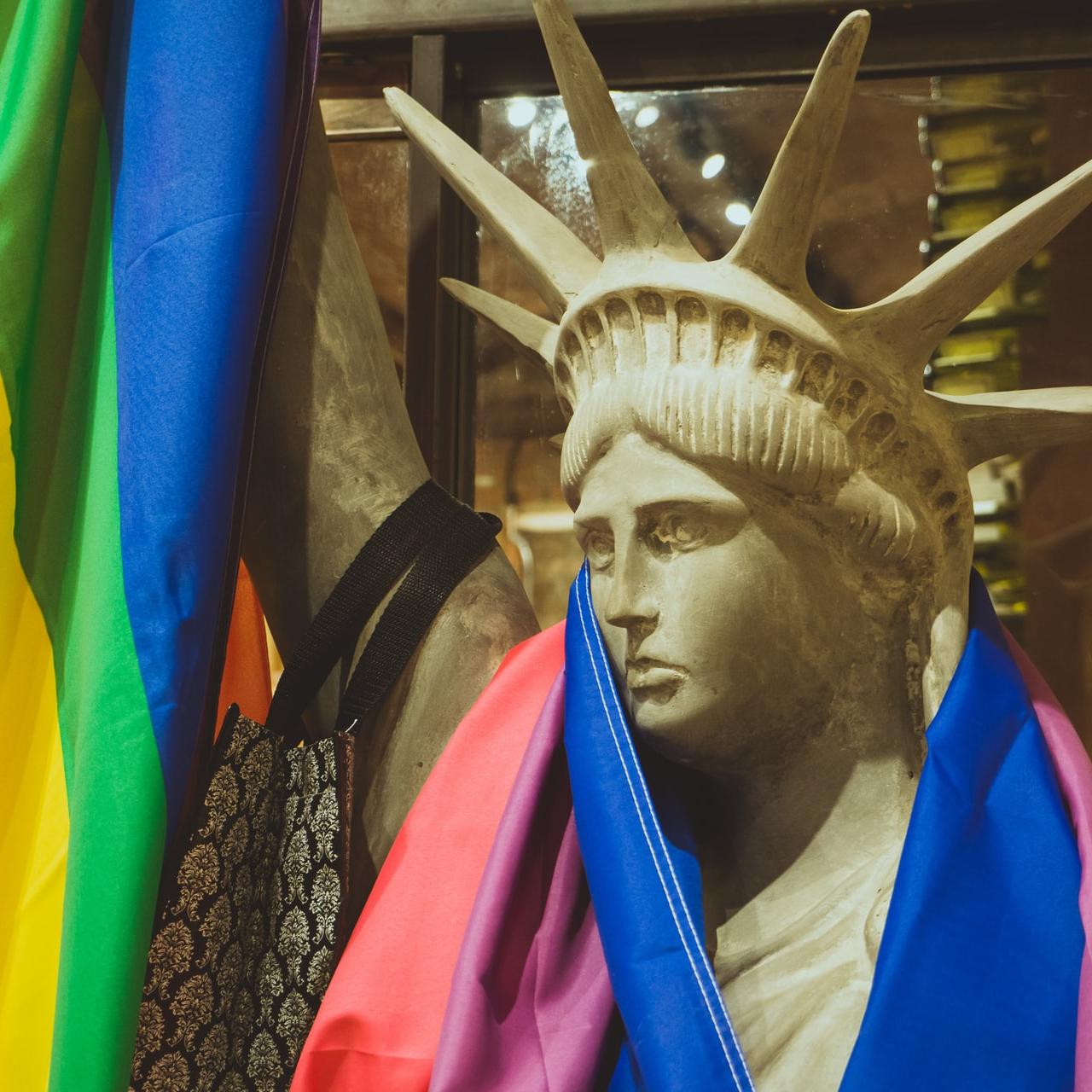
After years in which annual LGBTQ Pride events have promoted a festive, celebratory atmosphere, it can be difficult to recall that the pride movement is rooted in street protests against police brutality. However, the past is always present. The energy of Black Lives Matter activism has sparked a renewal of the original LGBTQ protest spirit. That creates new challenges - and opportunities - for corporations seeking to establish an inclusive brand as a Pride Month supporter.
The convergence of LGBTQ rights and Black Lives Matter
The birth of the modern LGBTQ equality movement has been credited to Marsha P. Johnson and other Black transgender women who were instrumental in the pushback against police violence in the late 20th century, most famously during the 1969 police raid of the Stonewall bar in New York City.
Despite the legalization of gay marriage and other significant milestones of progress, the twin narratives of transgender rights and race-based law enforcement have continued to play out in many forms, including “walking while trans” laws that have been deployed to target transgender women of color.
The fragility of gains in equal rights for both LGBTQ persons and Blacks in America was underscored by the tenure of former President and accused insurrectionist Donald Trump, who wrapped his political identity around erasing the identity of transgender persons and coddling white supremacists.
NYC Pride takes a stand on police violence
The confluence of the LGBTQ rights movement and Black Lives Matter came into full force after the murder of George Floyd by an on-duty police officer almost one year ago on May 25, just days before the launch of 2020 Pride Month festivities.
The annual celebration was already muted by the COVID-19 outbreak, and the murder of George Floyd set the stage for a re-examination of the relationships between LGBTQ activists and law enforcement.
Against this backdrop, last weekend NYC Pride announced that it has banned the New York City Police Department from participating in its Pride Month events.

“NYC Pride seeks to create safer spaces for the LGBTQIA+ and BIPOC communities at a time when violence against marginalized groups, specifically BIPOC and trans communities, has continued to escalate,” NYC Pride explained. “The sense of safety that law enforcement is meant to provide can instead be threatening, and at times dangerous, to those in our community who are most often targeted with excessive force and/or without reason.”
“NYC Pride is unwilling to contribute in any way to creating an atmosphere of fear or harm for members of the community. The steps being taken by the organization challenge law enforcement to acknowledge their harm and to correct course moving forward, in hopes of making an impactful change,” the organization added.
The ban will be in effect for at least four years, pending a review in 2025 by the NYC Price Executive Board and its Community Relations and Diversity, Accessibility, and Inclusion committees.
Listen to the voices at the front lines
Corporate sponsors that have been burnishing their social responsibility cred during Pride Month would do well to engage with NYC Pride, listen, and learn as the organization re-examines its relationship with law enforcement, the Black Lives Matter movement and all people of color.
As described by NYC Pride co-chair André Thomas, the decision to ban police participation followed “many months of conversation and discussion with key stakeholders in the community.” In particular, Thomas noted the contributions of the Anti-Violence Project and the National Black Justice Coalition, as well as Anita Dolce Vita of the digital magazine DapperQ and the non-binary writer, model and advocate Devin Norelle.
Corporate sponsors can also take a cue from NYC’s Pride renewed focus on community partnerships, as part of its strategy for motivating police reform.
“NYC Pride is also taking steps to increase the quality and quantity of partnerships with community-based organizations,” the organization explained, adding that “The dedicated QPOC contingent of the NYC Pride March will be prominently featured this year and in future years thereafter. NYC Pride will also commit to increasing Black-led, Black-centered partnerships and establishing long-term vendor relationships with minority-owned businesses in an effort to uplift queer and BIPOC-centered organizations.”
Standing up for transgender children
One way in which business leaders can help support NYC Pride’s new focus is by pushing back against the recent series of vicious attacks on transgender children under the guise of state-based legislation on school sports. At least one such law has passed in Arkansas, and other bills that health care options for transgender children are under consideration in at least 14 other states. That should be a wake-up call for any business that professes to support LGBTQ rights and Black Lives Matter.
Editor's note: Be sure to subscribe to our Brands Taking Stands newsletter, which comes out every Wednesday.
In that regard, it appears that T-Mobile has set a high bar for itself and other corporations to meet.
As the presenting sponsor, T-Mobile is featured on the 2021 NYC Pride web page, which highlights transgender people of color in this year’s theme, “The Fight Continues.”
“With the coronavirus pandemic still ongoing, issues of police brutality, the alarming murder rate for trans POC, economic hardship, climate disasters, violent efforts to disenfranchise voters, our rights as a community being questioned at the level of the Supreme Court, and more, we are in the midst of many different fights,” NYC Pride explained.
“We’re fighting for ourselves, fighting for the BIPOC and trans members of our community, and fighting for future generations,” added Thomas.
In addition to T-Mobile, a laundry list of leading corporate sponsors has lined up in support of NYC Pride’s plans for Pride Month 2021.
In view of NYC Pride’s emphasis on voter suppression as a crucial issue for LGBTQ rights, now would be a good time for some of these companies to re-examine their policies on corporate support for state and federal legislators, as well.
Image credit: Tatiana Rodriguez/Unsplash
Help Wanted: Infrastructure Jobs and Investment for All
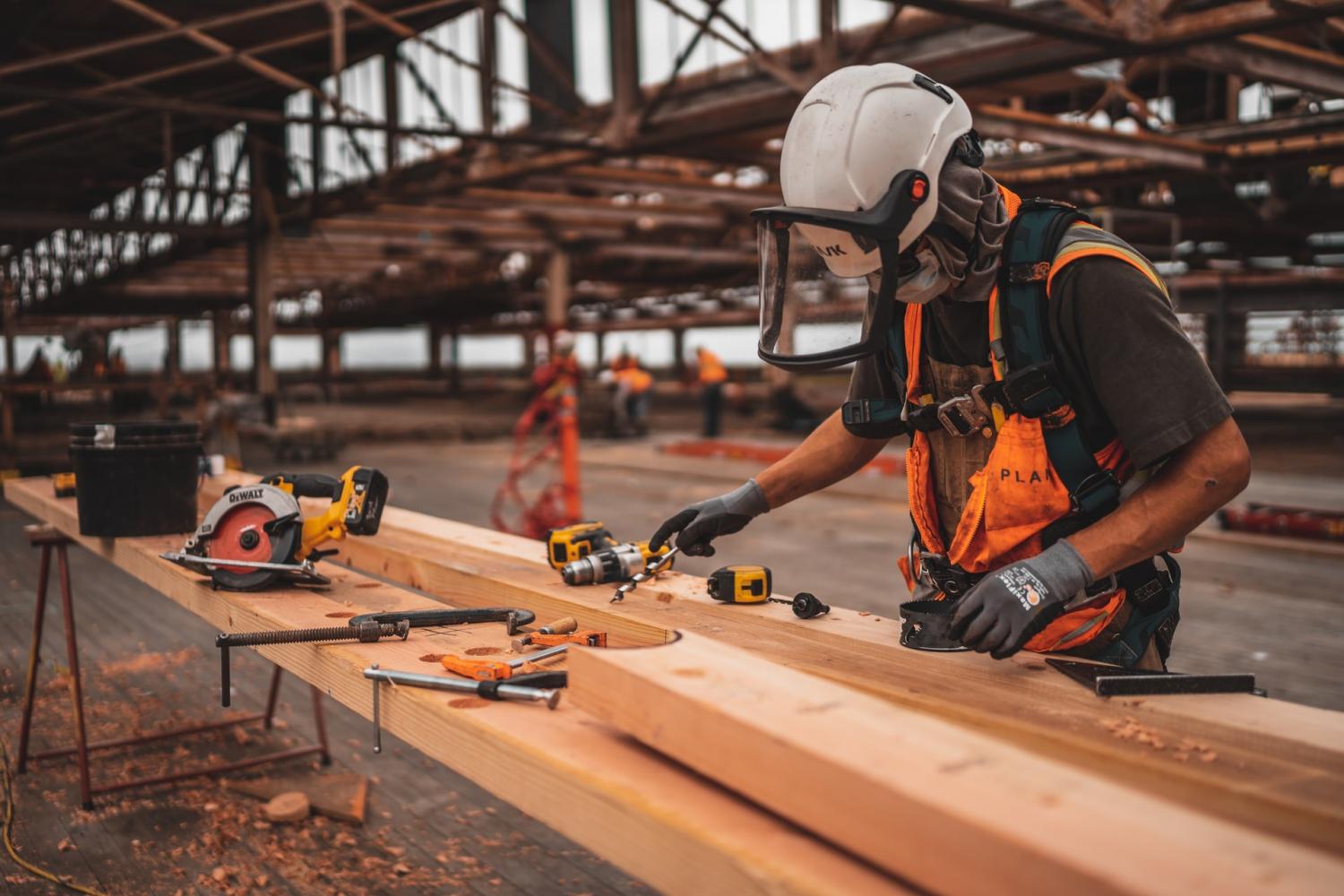
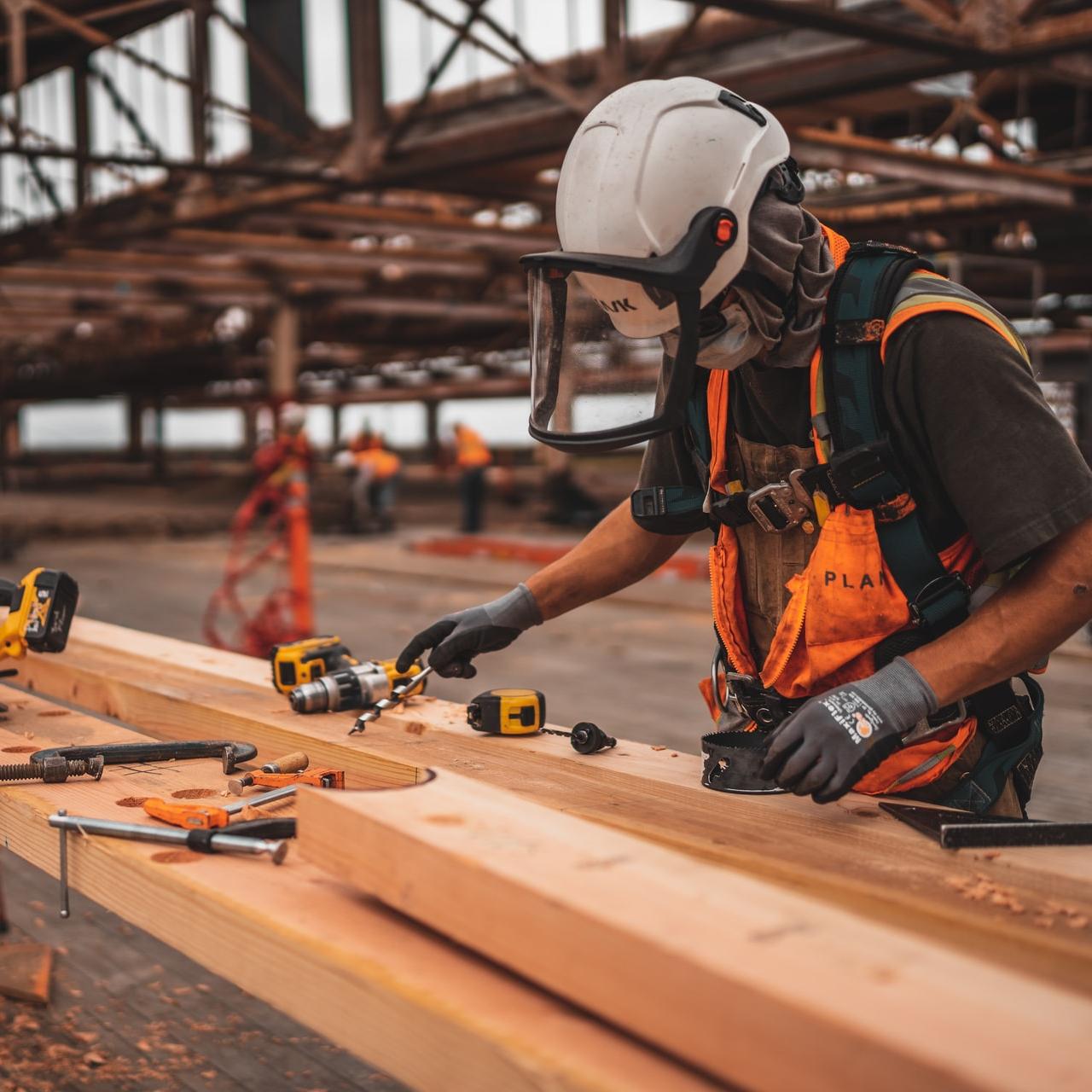
History has shown that investments in infrastructure can generate long-term benefits for the U.S. economy and workers. A massive boost in spending on infrastructure jobs helped put millions of Americans back to work during the 1930s. It allowed for another boom during the Eisenhower administration. And, at a smaller scale, a surge in repairing much of that infrastructure after the 2008-2009 financial crisis helped lower unemployment while boosting GDP.
Now, another huge infrastructure bill — the American Jobs Plan — has become the talk of Washington, D.C. as the U.S. prepares to shake off the effects of the COVID-19 pandemic. Assuming the politicking on Capitol Hill and Pennsylvania Avenue will stop, infrastructure spending could give the country another long-term economic boost, only this time going beyond traditional notions of highways and bridges, with more spending on things like water systems and broadband internet. The problem, however, is that such investments could result in benefitting too few while excluding far too many workers.
At least that’s according to the Brookings Institution, which points out in a new report that this space is still very much a white male world. Women are vastly underrepresented across infrastructure jobs, and depending on the type of work, they earn only about 88 to 91 cents to the dollar when compared to their male counterparts.
Editor's note: Be sure to subscribe to our Brands Taking Stands newsletter, which comes out every Wednesday.
As for people of color, the gap in wages for performing various infrastructure jobs is also stark. Black and Latino workers tend to dominate jobs that pay on the lower end. As for the higher paying jobs, such as road maintenance workers, power plant operators and power line installers, well over 75 percent of workers are white. As Brookings and other organizations have long argued, this discrepancy isn’t about a “skills gap,” but an opportunity gap — as in, discriminatory hiring practices, ongoing bias, and the fact that education and training opportunities are not equally available to all students and workers.
So, how can this change? At a higher level, Brookings offers a three-part solution. First, more workers need to be exposed to careers in infrastructure in the first place. Next, companies and schools need to offer more flexible options to ensure anyone who seeks a job in the relatively well-paying building and construction industry can score the training that he or she needs. Such a change could include training available near public transport hubs and more access to affordable childcare. Finally, companies within this industry need to take action to ensure their work sites are actually welcoming to all: For example, women working in “traditionally male” fields tend to endure more sexual harassment than in other sectors, according to a 2020 Catalyst study.
“Future infrastructure investments hold enormous potential in expanding economic growth, but ensuring this growth is equitable and enduring hinges on our ability to learn from the mistakes we’ve made in past infrastructure stimulus efforts,” the Brookings study’s authors concluded.
Image credit: Jeriden Villegas/Unsplash
More Black Employees Feel Burnout, But Do Companies Even Notice?


For Black employees across the U.S., showing up at the physical or virtual office is often a struggle. Following the death of George Floyd and the toll of the global pandemic's outsized impact on communities of color, they are stressed. They feel burned out, and many don't feel as if their worries are shared by their colleagues and managers.
That should be at a minimum cause for concern, if companies are even aware of what’s going on with their employees. While just about everyone is feeling the toll of lockdowns, political strife and unfulfilled calls for social justice, the burdens are falling especially hard on people of color. Black women in particular are less likely to feel supported by their employers, according to a recent McKinsey study of how women are faring in the workplace.
The messages — or should we say, the messengers — that corporate America has sent aren’t necessarily helping either. Part of problem lies in the fact that many of the boldest pledges in support of the Black Lives Matter movement are coming from the whitest of companies — and such commitments have long been questioned, starting during the peak of the Black Lives Matter protests last June. One February survey suggested 80 percent of companies are solely “going through the motions” when it comes to their publicly stated diversity and inclusion commitments.
Whether such pledges are genuine or not, in any event, companies across the board will have a hard time fulfilling their commitments to ensure a more welcoming, inclusive and, yes, diverse workforce.
“Significantly increasing the numbers of Black, Latino and other underrepresented workers means not just bringing in new people, but keeping the ones you have,” Kelsey Butler wrote for Bloomberg earlier this week. “For employers, that's going to mean addressing burnout in a way they never have before.”
Editor's note: Be sure to subscribe to our Brands Taking Stands newsletter, which comes out every Wednesday.
Butler interviewed 12 Black employees, who largely agreed that their employers have not done enough to address the challenges Black people face day-to-day and in the workplace. It’s clear that most managers aren’t or won’t respond to such concerns voiced by their colleagues, let alone check in on how their direct reports are faring. As one career coach told Bloomberg, the ongoing toll of confronting racism piled upon the realities of the pandemic have led workers to take sabbaticals and sick leave. If they can’t quit and leave, at least they can dodge a toxic environment a few days here and there. That coping tactic hardly solves the problem, though.
In addition to changing a work culture that may not be welcoming to anyone who feels as if they are an “other,” companies hopping aboard the diversity train are already confronting one obstacle that’s long been a challenge: attrition. Another study found that Black employees will just pack up and leave a company at a higher rate than that of whites, largely because they are frustrated in their quest for professional advancement.
In their rush to follow through on 2025 pledges focused on diversity as well as their drive to recruit from a more diverse pool of talent, many companies are putting the cart in front of the horse. The more important job for many of these companies is to ensure that everyone feels welcomed — as in, they are allowed to be themselves and work free from slights, microaggressions, hostility and racism in the office.
Let’s face it: Just because it’s not being said to human resources or posted on Glassdoor doesn’t mean it isn’t happening. And the truth many businesses must face is that employees don’t leave companies, they leave managers — and if a company’s management isn’t addressing such concerns, any bold promise to staff a more “diverse” workplace will remain undelivered. So, before stating your intention to hire someone who’s a person of color, it may help you to learn why those previous employees put in their two weeks’ notice in the first place.
Image credit: Unsplash
For Low-Income Communities, Digital Access Opened Unexpected Doors in a Pandemic


When her daughter’s fourth-grade education became increasingly dependent on internet access three years ago, Jamillah Lamb, a director on Capital One’s Community Finance team, had one of those lightbulb moments. While she could provide her daughter with devices and in-home internet and digital access, what about those families who couldn’t?
“I began to think about the impact of the digital revolution on families who may not have the same resources as everyone else,” Lamb told TriplePundit. “From my work at Capital One, I know that digital inclusion is financial inclusion, and I have seen how corporations can make a large-scale impact in helping underserved communities. I think it’s important for each of us in society to use our particular assets to make a positive social change.”
Lamb turned that lightbulb moment into a full-fledged initiative: the Capital One Digital Access (CODA) program, which provides access, training, and devices to residents at affordable housing developments that Capital One helps to fund. It is part of the Capital One Impact Initiative, an initial $200 million, five-year commitment to support growth in underserved communities and advance socioeconomic mobility by closing gaps in equity and opportunity.
The more Lamb learned about the digital access divide, and how it disproportionately affects communities of color and low-income households, the more she realized Capital One was once again in a position to put its resources to good use, in this case providing digital access for those who need it most.
In New York City alone, where a number of the properties in CODA are located, almost 30 percent of households do not have broadband internet, including 46 percent of households living below the poverty line. For Lamb, it quickly became a passion project: “I really wanted to make a difference for these families.”

This digital access program launched during the pandemic, bringing relief when it was needed most
The program took two years to design, and Lamb and her colleagues were about to launch in March 2020 when the coronavirus pandemic hit. “I don't think we could have ever predicted that we would be launching this at the start of a pandemic, and it certainly has provided challenges but also opportunities, because it was needed more than ever,” Lamb explained.
After ironing out a few hitches, like devising other ways to bring internet into homes when it wasn’t possible for in-home technicians to set up routers, the program got off the ground. Now, over 1,000 families at 11 affordable housing properties across the U.S. benefit from CODA.
For these families, the program has been a lifesaver during the pandemic, helping with everything from jobs and education to managing finances and staying connected with family. They are not alone in coming to depend on digital access: More than half (53 percent) of Americans have said access to the internet and online tools has been essential during the pandemic.
Lamb’s many years working as an underwriter for Capital One affordable housing loans showed her just how many families could benefit by simply getting a hand up, she told us. The program grants free digital access to all building residents for a set period of time (typically between two to five years) to get them started. Free Chromebooks and tablets are also made available to residents.
That all adds up to more children being able to participate in virtual lessons, parents who can work remotely, and senior citizens who can maintain contact with healthcare providers while staying safely in their homes.
“For me, it’s just knowing the impact that it's making on people's lives — that they are better off today than they were yesterday,” Lamb said. “At the start of the program, one resident told me this will change not only their lives, but [also] their children's lives. And that was really powerful and stuck with me. Being able to really make an impact on someone is very rewarding.”
A digital helping hand provides a long-lasting impact on families
While digital access has been more vital during the pandemic — with the massive shift to remote work and education as families continue to shelter indoors — Lamb knows that its value will resonate with these families for years to come. “For adults continuing their education, or anyone needing to access tele-health or online financial services like banking and bill paying, digital access is really becoming an essential utility like electricity, water or gas,” she told 3p.
That’s where the government is in a position to make some changes. In April the Federal Communications Commission (FCC) began testing a program called the Emergency Broadband Benefit, aimed at helping households struggling to pay for internet service during the pandemic. It will provide a discount of up to $50 per month toward broadband service for eligible households and up to $75 per month for households on Tribal lands. Eligible households can also receive a one-time discount of up to $100 to purchase a laptop, desktop computer, or tablet from participating providers if they contribute $10 to $50 toward the purchase price.
But until digital access becomes as common a utility as water or electricity for most U.S. residents, programs like CODA provide an important way to close the gap and expand digital inclusion. Based on the pilot of 11 properties, Capital One intends to continue the program, looking at lessons learned and determining what improvements could be made to reach even more families in need of a digital helping hand in the future, Lamb said.
This article series is sponsored by Capital One and produced by the TriplePundit editorial team.
Image credit: Yaroslav/Adobe Stock
Why Urban Planning Must Ensure Climate Justice


Urban and regional planning can and should be a critical part of any long-term climate change prevention strategy. It plays a role in transportation plans that seek to reduce automobile use, congestion and urban sprawl. Such plans are also key to reduce water consumption and the prevention of sea level rise. Urban planning, however, has also contributed to systemic racism across the U.S.
In recent years, urban planning has often focused on the preservation and building of green spaces and new types of lighting installed along city streets. But such an approach goes far from addressing how the decisions of city planners have caused harm to communities of color – from massive mid-twentieth century redevelopment in cities like New York to the building of freeways across Los Angeles. More often than not, America’s highways have been divided, and even obliterated, Black communities.
There are numerous examples of how historically racist city planning practices still have an impact on cities and towns across the U.S. today. The seven-year-long Flint water crisis is among the leading examples of how majority Black communities have endured, among many problems, huge public health risks.
Studies have shown that in many cities like Sacramento, poorer neighborhoods can experience anywhere from 5 to 20 degrees Fahrenheit warmer temperatures in comparison to wealthier and whiter tree-lined communities. Inequalities within Philadelphia have caused the air pollution in its Black neighborhoods to be linked to increased cases of asthma and respiratory diseases that make it among the most deadly air to breathe in the country. Cities in California’s Central Valley have also seen a huge difference in air quality between poor and wealthier neighborhoods, often the legacy of past urban planning decisions.
Denver is one city with leadership that appears aware of how previous city planners’ redlining policies have had long-term effects on poorer and more diverse neighborhoods; the results have included a roadmap that local officials say can help reverse that trend. To that end, Denver’s city government been prioritizing new parks, tree-planting and trail networks to be placed in its areas including northern neighborhoods that city officials had long overlooked. The city’s overarching goal – one shared by other U.S. cities - is to take on urban “heat islands” while improving public spaces that are needed for the people in those neighborhoods to enjoy during those warmer months.
Critics in Denver have been concerned about how these efforts could accelerate gentrification within those neighborhoods, and how past governmental planning interference has long made some residents wary of the city government’s insistence that it wants to help. Nevertheless, by partnering with local non-profits and having open and honest discussions about the what had occurred across Denver in years past, local leaders say they are taking the steps needed to strengthen its neighborhoods in a much more sustainable and equitable way.
The bottom line is that city sustainability plans must go beyond a focus on the environment: They must be inclusive and ensure they no longer contribute to systemic racism, a trend that the pandemic has actually exacerbated. Urban planners and municipal leaders need to deploy new tactics such as allowing communities’ voices be heard, the inclusion of local residents in any decision-making process and a commitment to transparency can help ensure climate justice is a guarantee not only for the few, but for all.
Image credit: Cassie Gallegos/Unsplash
The Community Solar Movement Gets a Jolt from Starbucks


Retail establishments are one of the great frustrations for solar power enthusiasts, because installing rooftop solar panels is simply not an option for many retail businesses. Fortunately, community solar projects offer a solution, and Starbucks has spotted an opportunity to scale up and accelerate the community solar movement.
What is community solar?
The U.S Department of Energy has been promoting community solar as a means of enabling small scale, locally-generated solar power to reach more electricity users.
Rooftop solar arrays have enabled many building owners to participate in the solar trend, but that option is not an available to many retailers and other tenants in leased properties.
In addition, many buildings are unsuitable for rooftop solar arrays due to other considerations such as shading, structural issues or historical restrictions.
Financing is another sticking point. Though new financial arrangements make it easy for property owners to have a rooftop solar array installed with no money up front, many still hesitate to make the commitment.
Community solar projects work around all of these obstacles by providing multiple ratepayers in a defined geographic area with access to off-site solar power. Under the Energy Department’s definition, that can include power purchases as well as a physical solar project.
Scaling up community solar
Starbucks has already assumed an aggressive leadership role in renewable energy adoption, and almost none of it involves rooftop solar arrays on its stores.
By 2015, the company wrangled a 100 percent renewable energy pipeline for 9,000 stores in Canada and the U.S. through power purchase agreements. It is currently working on a similar arrangement to greenhouse gas emissions for its U.S. coffee and beverage production facility.
The community solar field is a relatively new one, and it provides Starbucks with another opportunity to lead on renewable energy.

Last week, Starbucks and the firm Generate announced completion of the initial six projects in a first-of-its-kind, multi-year community solar plan in New York State, which will eventually total up to 23 projects totaling 90 megawatts in capacity.
“The projects are expected to supply solar energy for local Starbucks stores and up to 24,000 households, small businesses, nonprofits, churches, universities and stores in multiple geographies,” the two companies explained.
On its part, Starbucks will be able to offset more than 70 percent of its electricity consumption in New York State, through renewable energy credits garnered by the projects.
Opening the renewable energy door for low income households
In addition to its ambitious scale, the Starbucks-Generate agreement is also significant because it overcomes a key obstacle to widespread solar adoption.
Though the cost of solar power is falling, conventional electricity still costs less in many markets. Ratepayers who want clean energy typically must opt into their utility’s clean energy rate program. That often involves paying a premium, which effectively shuts the door on many low-income households.
Even without the premium, the opt-in requirement is a hurdle for ratepayers at all income levels.
In New York State, though, community solar projects can be discounted from regular rates and offered on an opt-out basis, automatically benefiting all rate payers.
New York also sweetened the pot through its tax structure, which enabled Starbucks to commit $97 million in tax equity to the community solar plan, through an arrangement with the financial services firm Churchill Stateside Group.
Taking sustainability to the next level
The community solar plan illustrates the potential for companies to leverage existing technology, financial tools, and renewables-friendly state policies to scale up and accelerate decarbonization.
Having tucked that under its belt, Starbucks is already looking to the future.
Last month, Starbucks announced that it is stepping up its ongoing relationship with Arizona State University to create a new research and innovation center, called the ASU-Starbucks Center for the Future of People and the Planet. The new facility will enable Starbucks to fast-track new strategies and products into its retail stores and communities across the nation and globally.
The idea is similar to the company’s existing innovation incubator in its Seattle headquarters, but with a distinctive outward-looking focus. The new center will be located at the existing Julie Ann Wrigley Global Futures Laboratory, which counts sustainability, conservation, biodiversity, and food systems among its focus areas.
Through the new center, Starbucks anticipates improving on its Greener Stores energy efficiency and renewable energy initiative, while also developing more plant-based foods and other alternative menu items; the company has also said it will further the training of employees on community engagement.
The company’s nine ASU stores will serve as living test labs for new menu items, recycling and other circular economy goals, as well as additional new technologies.
The nine stores are run by the leading food, facilities, and uniform company Aramark, which has begun to establish a strong sustainability profile of its own. The nine ASU stores represent just a small fraction of the company’s operations on campuses, leading to a potential ripple effect across the U.S.
Through the new community solar program, Starbucks has already demonstrated how retailers can deploy existing technologies and systems for maximum impact. Now, with the new level of collaboration between ASU and Aramark, Starbucks is providing other companies with an innovation roadmap for future impact.
Image credit: Erik Mclean/Unsplash
The 100 Best Corporate Citizens of 2021
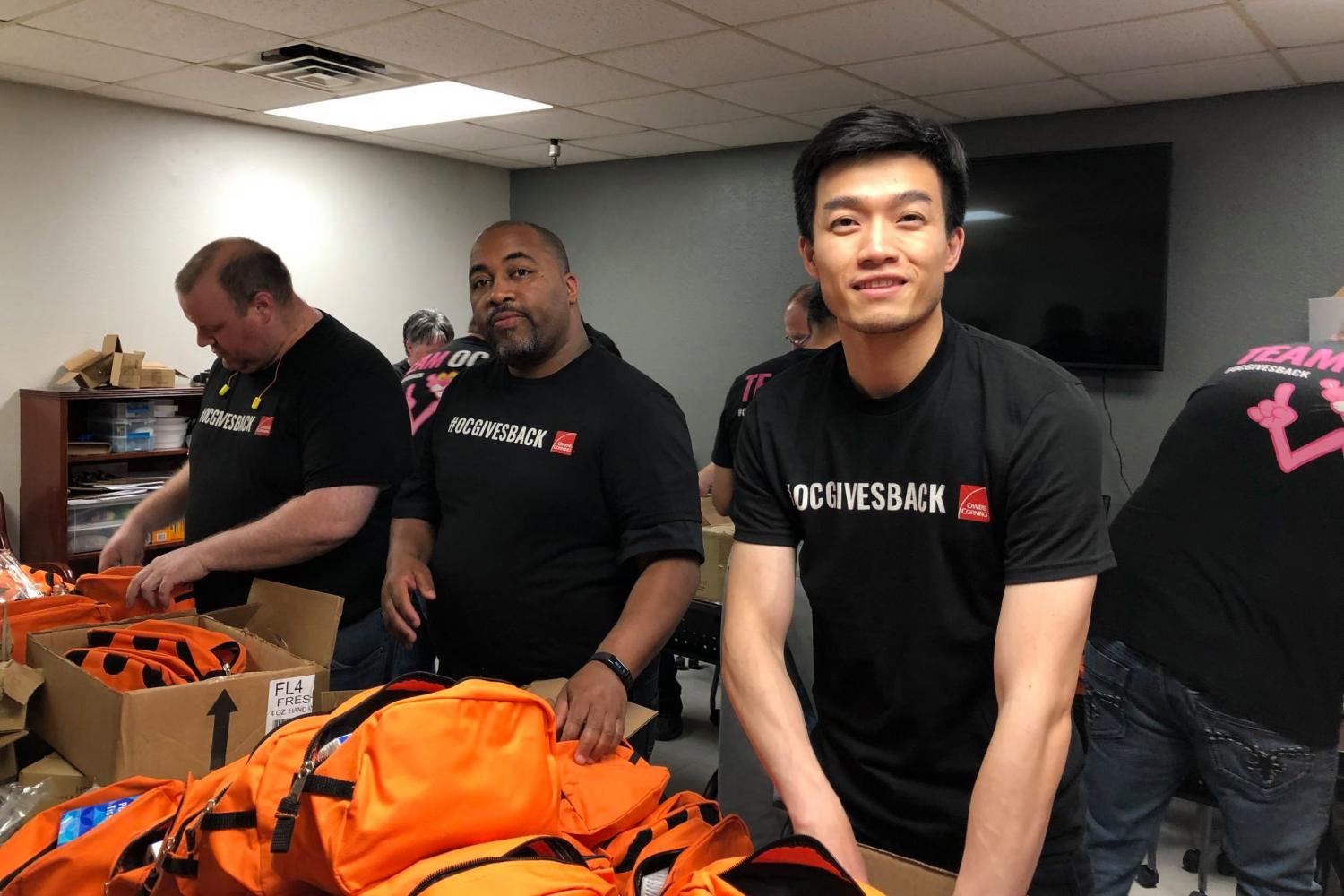
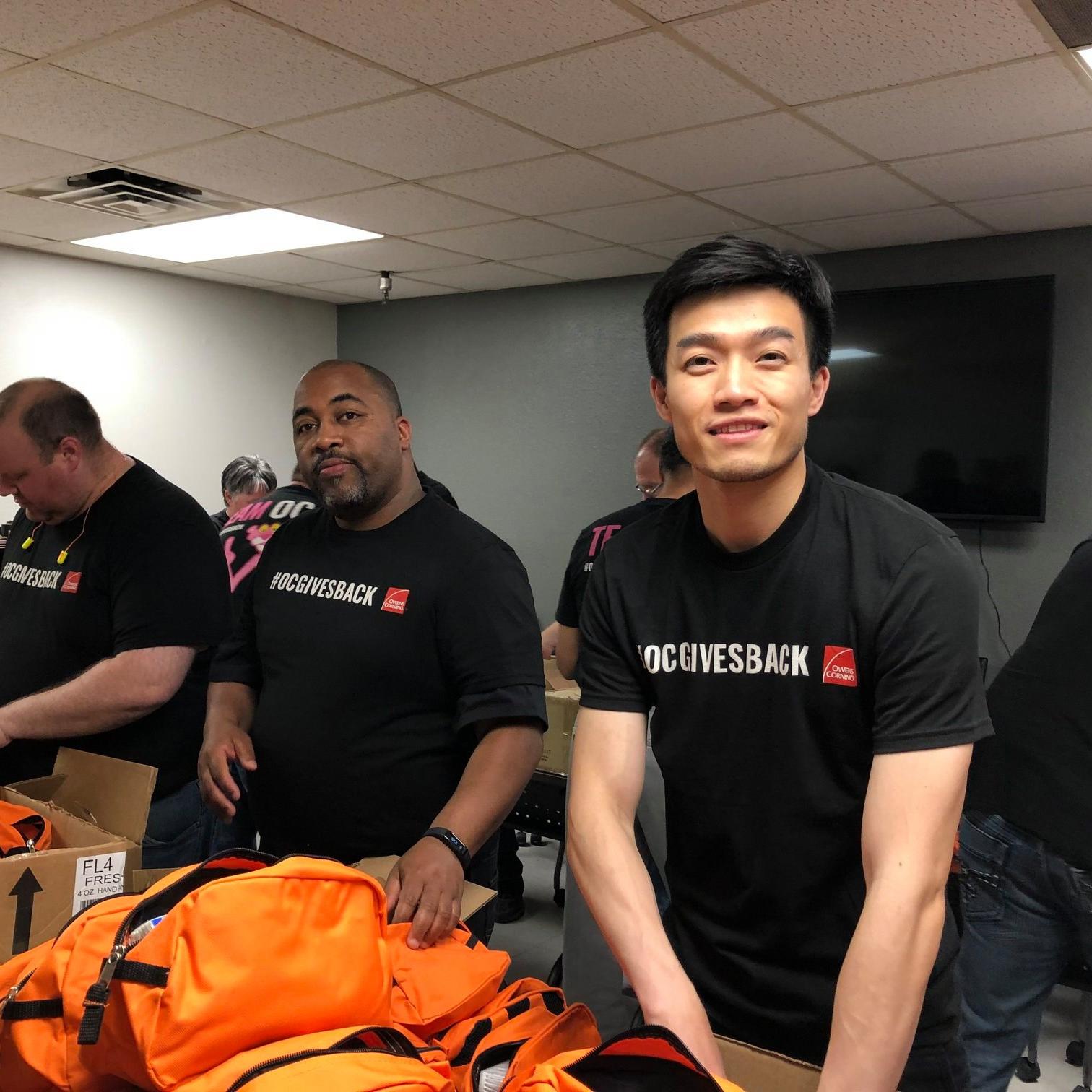
Today, 3BL Media announces its annual 100 Best Corporate Citizens rankings, which recognize environmental, social and governance (ESG) transparency and performance within the 1,000 largest U.S. public companies.
For the third consecutive year, Owens Corning tops the list - and the Toledo, Ohio-based company is the first ever to do so. Rounding out the top five in the 100 Best Corporate Citizens rankings are General Mills, HP, Cisco and Intel.
Why does the 100 Best Corporate Citizens matter?
The coming decade will be pivotal if we are to achieve global climate and societal goals and rebuild a more inclusive and resilient economy. Achieving such outcomes depends on corporate leadership and transparency on ESG topics. To that end, think of the 100 Best Corporate Citizens as setting a standard for transparency that can help advance corporate accountability.
This year, 24 companies are new to the 100 Best; 14 of them are listed for the first time. The companies appearing for the first time are: AptarGroup, The AES Corporation, ON Semiconductor, Crown Holdings, Prologis, Walmart, Marathon Petroleum, Host Hotels & Resorts, Walgreens Boots Alliance, LyondellBasell Industries, Boston Scientific Corporation, Regeneron, Essential Utilities and Kilroy Realty Corporation.
Only 19 companies have made the rankings each year since 2009: 3M, Abbott, Accenture, Baxter, Bristol Myers-Squibb, Cisco, Colgate-Palmolive, Eaton, General Mills, Hess, IBM, Johnson Controls, Intel, Microsoft, Nike, PepsiCo, Gap, Weyerhaeuser and Xerox.
What determines these rankings?
The team at 3BL Media sets the 100 Best Corporate Citizens methodology, framed through measuring 146 ESG transparency and performance factors across eight pillars: climate change; employee relations; the environment; ESG performance; finance; corporate governance; human rights; and stakeholders and society.
In addition, several factors within the 2021 methodology account for the response to the various social issues that had emerged during the global COVID-19 pandemic.
When it comes time to start compiling these rankings, our research partner, ISS ESG, collects data and information from only public sources – not from questionnaires or company submissions. Further, there is absolutely no fee or costs for companies to be assessed or to verify ISS ESG’s research.
In addition, through 3BL Media’s partnership with InfluenceMap, an organization that maintains the world’s leading database of corporate lobbying on climate policy, this year’s rankings ensures that companies’ political activities are in alignment with the Paris Agreement.
The 100 Best Corporate Citizens rankings were first published in 1999 in Business Ethics Magazine and later by Corporate Responsibility Magazine from 2007 to 2019. 3BL Media has owned 100 Best Corporate Citizens since 2017, and we still rank companies within the Russell 1000 Index against sets of ESG transparency and performance factors, using only public data and information.
In the wake of the public health crisis and the calls for social justice during 2020, the demands for corporate transparency, accountability and leadership have never been louder. Here’s the reality: stakeholders at all levels are interested in how companies are working on issues from COVID-19 and climate change to systemic racism and voting rights. That is why in assessing this year’s 100 Best Corporate Citizens rankings, we now measure performance on these issues - and increase our scrutiny of political actions - so we can ensure that corporate citizenship is defined not only by these companies’ internal actions, but also their external lobbying efforts.
Image credit: Owens Corning/Facebook
Plantega Serves Up Plant-Based Deli Options for New Yorkers and Their Beloved Bodegas


Photo: A bodega customer in the Bronx noshes on an empanada stuffed with plant-based ingredients. New York-based Plantega is rolling out more plant-based deli options across the Big Apple's boroughs.
Do you live in New York, shop at bodegas and like to try tasty and environmentally friendly food options, but cannot afford them or do not know where to find them? Plantega may have the solution.
Plantega was launched in late 2020 with the goal of bringing leading plant-based brands to New York City’s independent bodegas.
The post-launch response from both customers and bodegas was positive, and led to the recent announcement that Plantega is expanding to more bodegas by the end of 2021.
Plantega is democratizing plant-based food options in the Big Apple
Plantega comes from blending “plant-based” and “bodega.” But in New York it means more than just that.
The organization was created by social change incubator Effect Partners with New Yorkers, entrepreneurs, and plant-based influencers Nil Zacharias and Erick Castro leading the movement.
The team was motivated to start Plantega as an effort to combat some of the main challenges affecting our current food system. “Our global food system today is highly industrialized and doesn’t do a very good job at feeding the world,” Zacharias, Plantega’s CEO, explained in an interview with TriplePundit. “Meat alternatives, such as plant-based foods, could change that.”
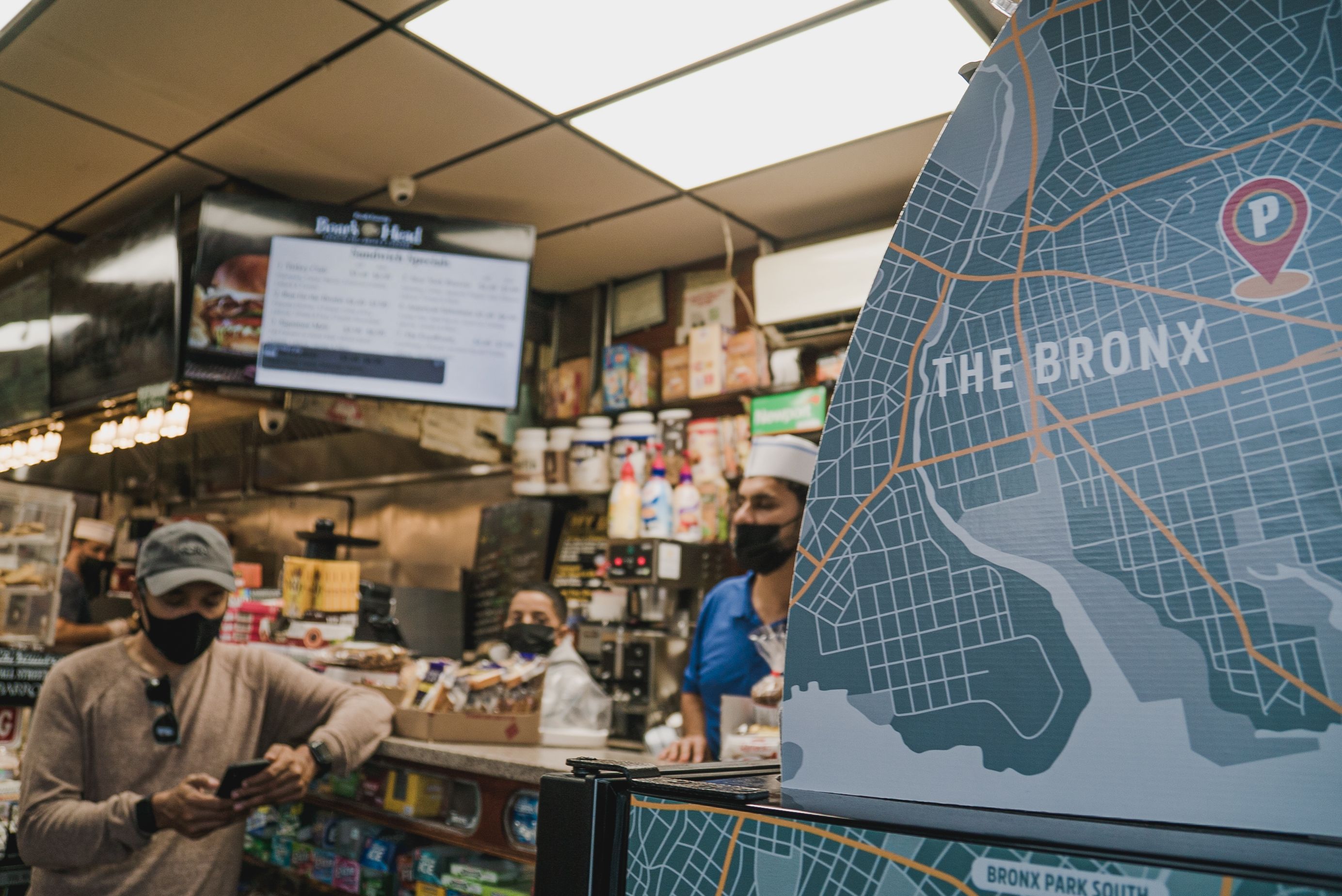
Unfortunately, as Zacharias noted, “Choice is not a privilege that many Americans have.” In fact, a Yale study from 2020 observed that while more than 50 percent of Americans show interest in integrating plant-based alternatives to their diets, 53 percent do not know what to purchase and 71 percent of low-income homes view these foods to be more expensive than animal products.
Plantega is on a mission to make plant-based options accessible and affordable to everyone. Zacharias summarized the key drivers behind the success of Plantega’s business model: partnering with leading plant-based brands, setting up local businesses for success, and attracting and engaging new customers.
Recognizing bodegas as not only a stop for food, but as part of a community
The organization initially focused its efforts on New York, where bodegas are community spaces and, in some neighborhoods, the only place to access food.
Plantega works with iconic plant-based brands, such as Eat Just, Beyond Meat and Miyoko’s Creamery, to support the formation of partnerships, including negotiating wholesale competitive prices for bodegas and sourcing the brands’ products through local distributors.
Plantega then helps bodegas distribute these plant-based options through a food service and retail model. Bodegas are provided with a Plantega Grill deli menu that offers ready-to-eat options such as deli sandwiches and breakfast burritos, all priced at $10 or lower and prepared with 100 percent plant-based ingredients. Additionally, in some stores, the company installs Plantega-branded coolers for selling plant-based products.
The organization ensures that bodegas have everything they need to succeed. As Jamil Araf, store manager of Marinello’s Gourmet Deli, expressed during a recent talk with 3p, “Plantega covers most of the heavy lifting when launching new menu options. This includes having access to vegan ingredients at the lowest prices, training staff on how to make sandwiches and advertising new vegan deli options to customers.” And according to Zacharias, bodegas score most of the profits, too.
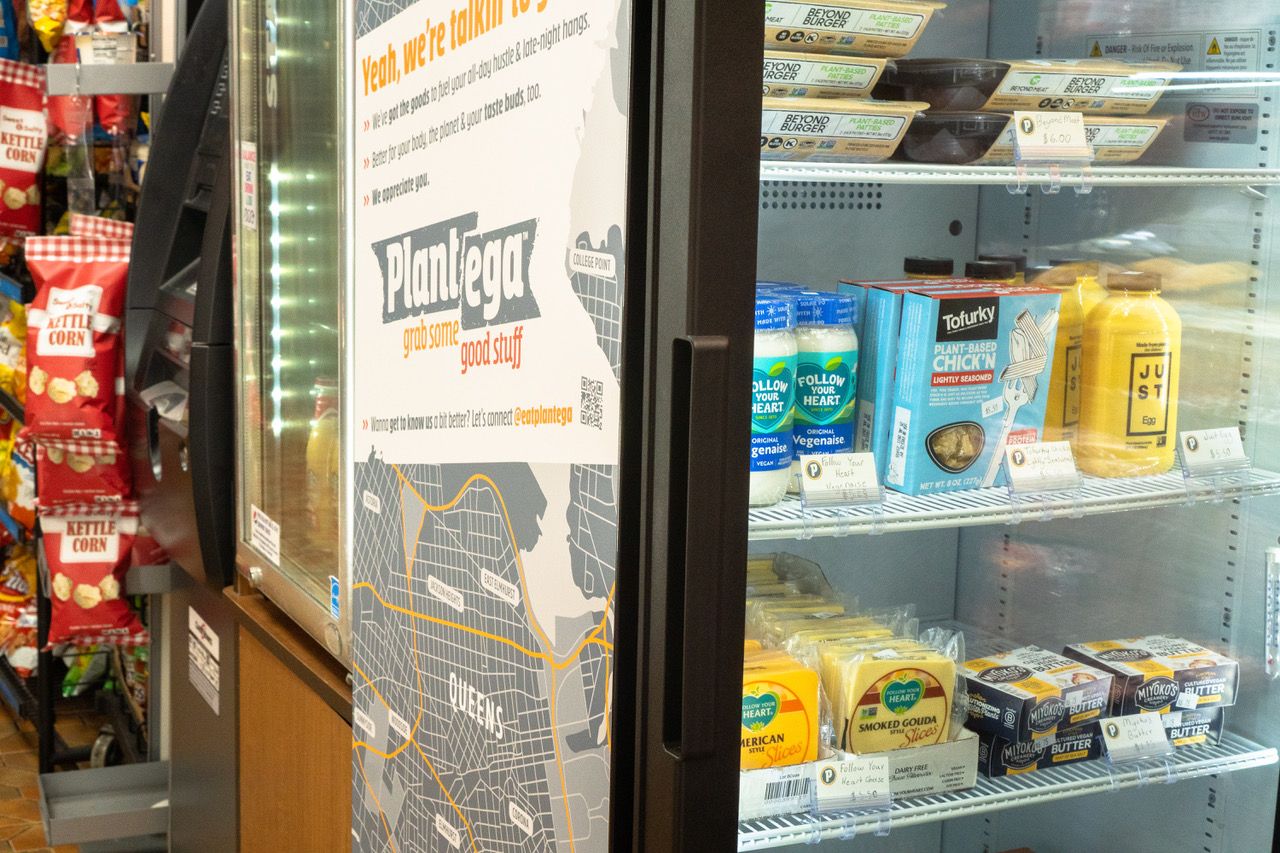
Finally, Plantega collaborates with plant-based brands, which in turn pay a fee applied towards building awareness and engagement within local communities across New York. Zacharias refers to this last piece as Plantega’s secret sauce. “We have a team of community ambassadors who bring our product to life. They can typically be found outside one of the stores engaging with customers,” Zacharias stated.
Plant-based products are generally marketed to an affluent crowd; however, Nil explains that the model works because Plantega allows brands to attract customers who otherwise would never have tried their products. “Why wait five to ten years to reach these customers? We can shorten that cycle by showing how tasty plant-based options really are and by making them easy to find,” Nil asserted.
Plant-based food brands share the enthusiasm, too. "We're thrilled to be a partner in Plantega's continued initiative in bringing delicious, affordable plant-based foods to even more New York communities this year," affirmed Josh Tetrick, co-founder and CEO of Eat Just, in a public statement.
Envisioning the future of protein
For 2021, Plantega plans to expand to at least twenty bodegas in New York City. In addition, the organization is exploring collaborations with chefs, local farms and delivery apps.
The challenge, however, is to keep the equation balanced at all times: “We need to make sure we don’t overcharge the bodegas, but yet we need to make enough money to grow, and have enough brands participating into the idea to make it successful,” Zacharias reflected.
As for the bodegas working with Plantega, they all have reported an increase in both their plant-based grill and vegan retail sales so far.
In the long run, the team envisions expanding to more stores and more cities. “We are here to learn, but also to show how delicious, healthy and affordable eating plant-based really is,” said Castro in an interview last fall with a vegan news site.
“For too long, the sustainable food movement has felt out of reach and culturally out of context for a large number of New Yorkers. Plantega is on a mission to change that,” Zacharias said.
Image credits: Plantega